
All photos courtesy of Zeynep Fırat
Shape of Your Error is an exhibition curated by Melih Aydemir took place in 5533, Istanbul featuring works from Hiba Ali, freakygreenfish, Ryan Josey, SaraNoa Mark and Aleksiy Taruts.
Taking its title from Audre Lorde’s poem, ‘‘Good Mirrors Are Not Cheap’’, the exhibition establishes a connection between the invisible labor of workers in the field of art, and the physically visible but unpaid labor of artists. The impact of immaterial labor’s working conditions on the workers is depicted by the following lines in the poem: and the fault in a mirror slaps back becoming what you think is the shape of your error.
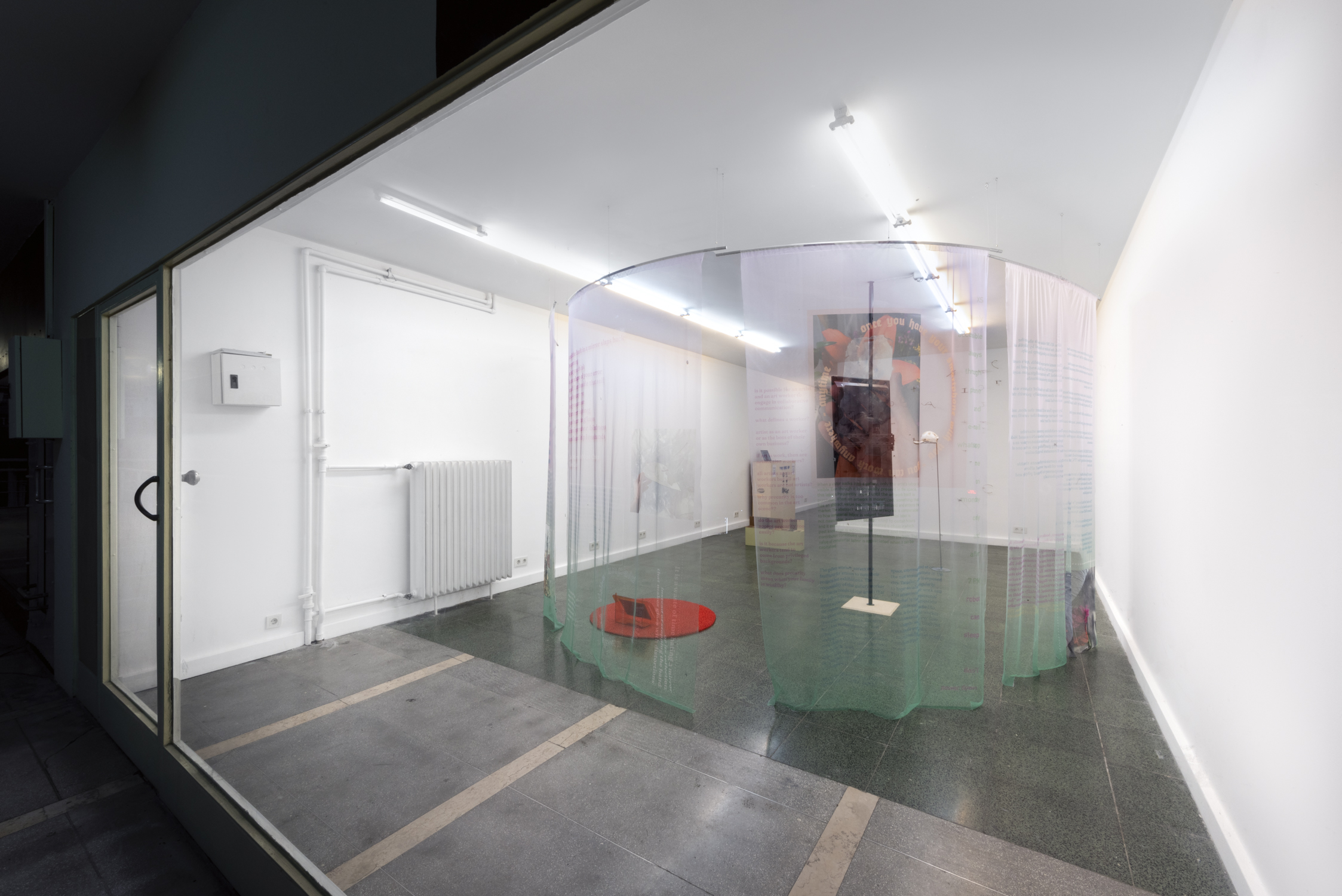
The curatorial statement of the exhibition printed on a semi-transparent curtain that surrounds the space, refers to the mental mobility of immaterial labor and its invisibility. This installation created by Melih Aydemir showcases the blurring boundaries between work and leisure, and how the immaterial workers find themselves in a constant state of flexibility and fluidity due to the extreme necessity of communication during and outside working hours. Behind the curtain, the works of the artists -who are one of the factors that ensure the existence of the art worker in the cultural industry- reflecting on different types of labor and artists’ relationship with labor itself are presented.
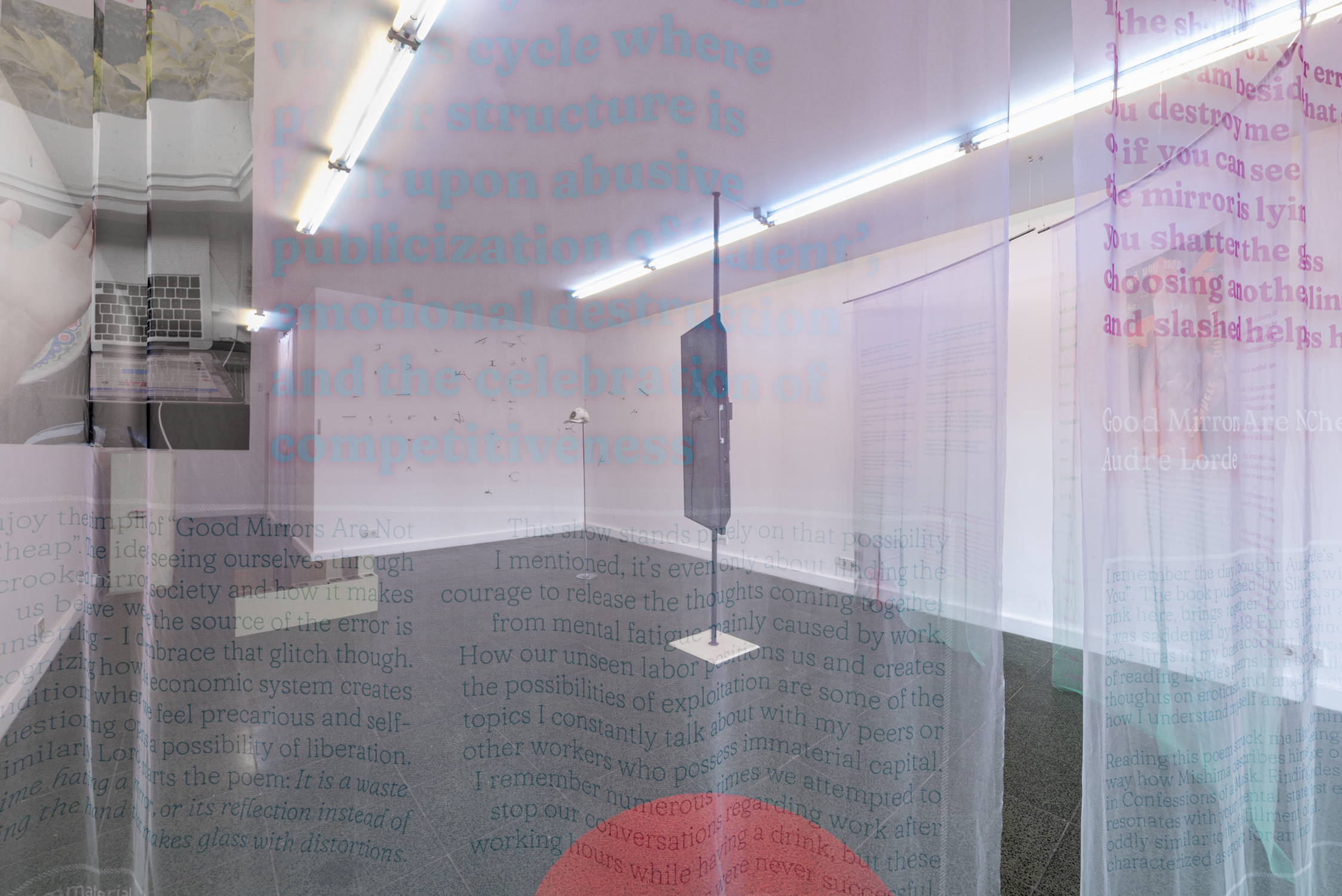
Melih Aydemir, Good Mirrors Are Not Cheap, 2023, Digital print on tulle, metal
250 x 460 cm
freakygreenfish (he/him), creates a scenery where his own body turns into a painting through his performances using wooden frames and canvas fabric which are traditionally considered as the main materials of visual arts. freakygreenfish discusses the state of being an artist with a humorous performative approach in his TikTok and Instagram videos, and says that he gives up his life for art by transforming himself into a painting.
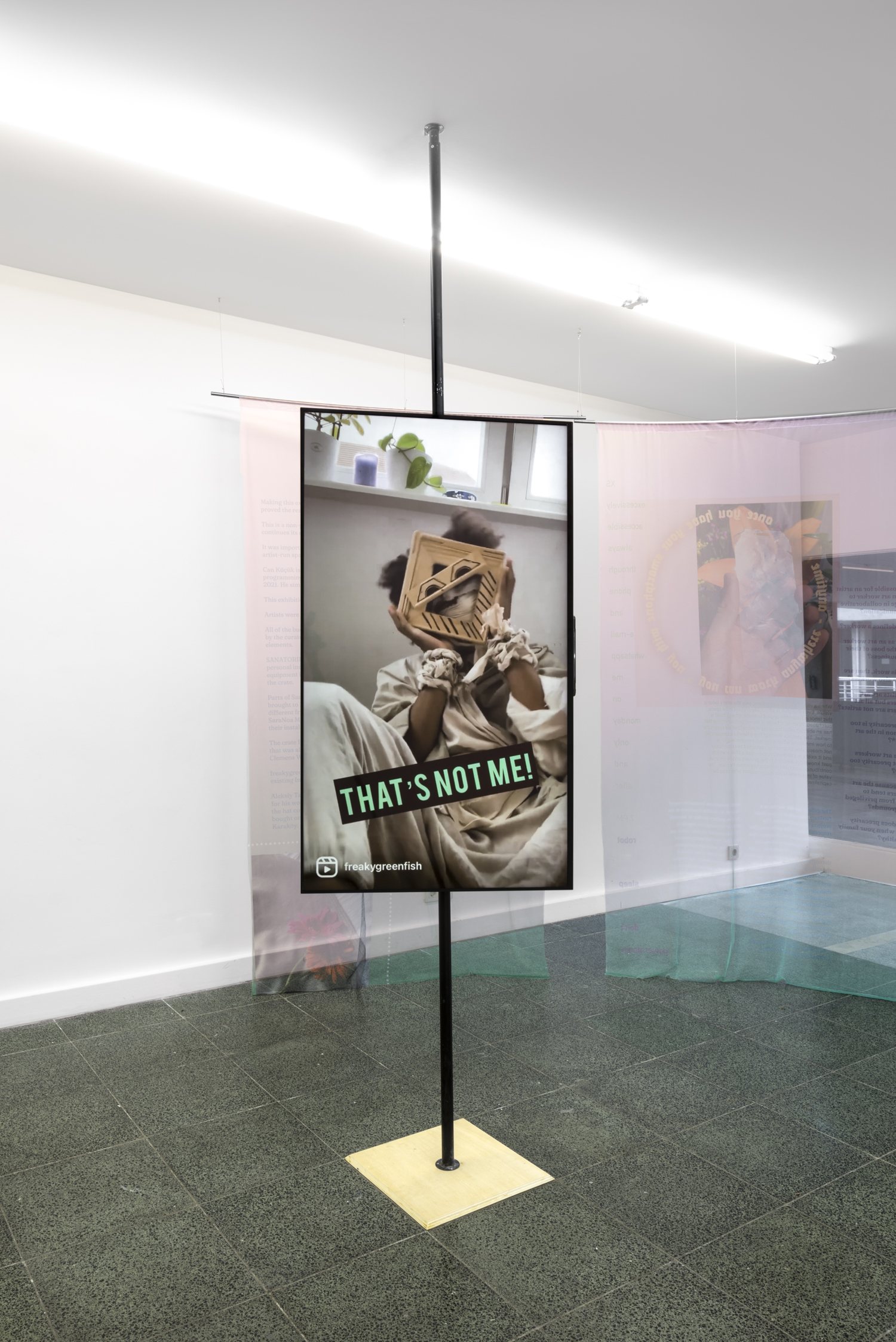 freakygreenfish, Reels from freakygreenfish’s Insta, 2023, Color Video, 04:05
freakygreenfish, Reels from freakygreenfish’s Insta, 2023, Color Video, 04:05SaraNoa Mark (they/them) and Ryan Josey (he/him), who have been displaced between different forms of labor in order to sustain their creative production, examine the diversity of work they have done to access economic capital and how it’s being reflected in their artistic practices.

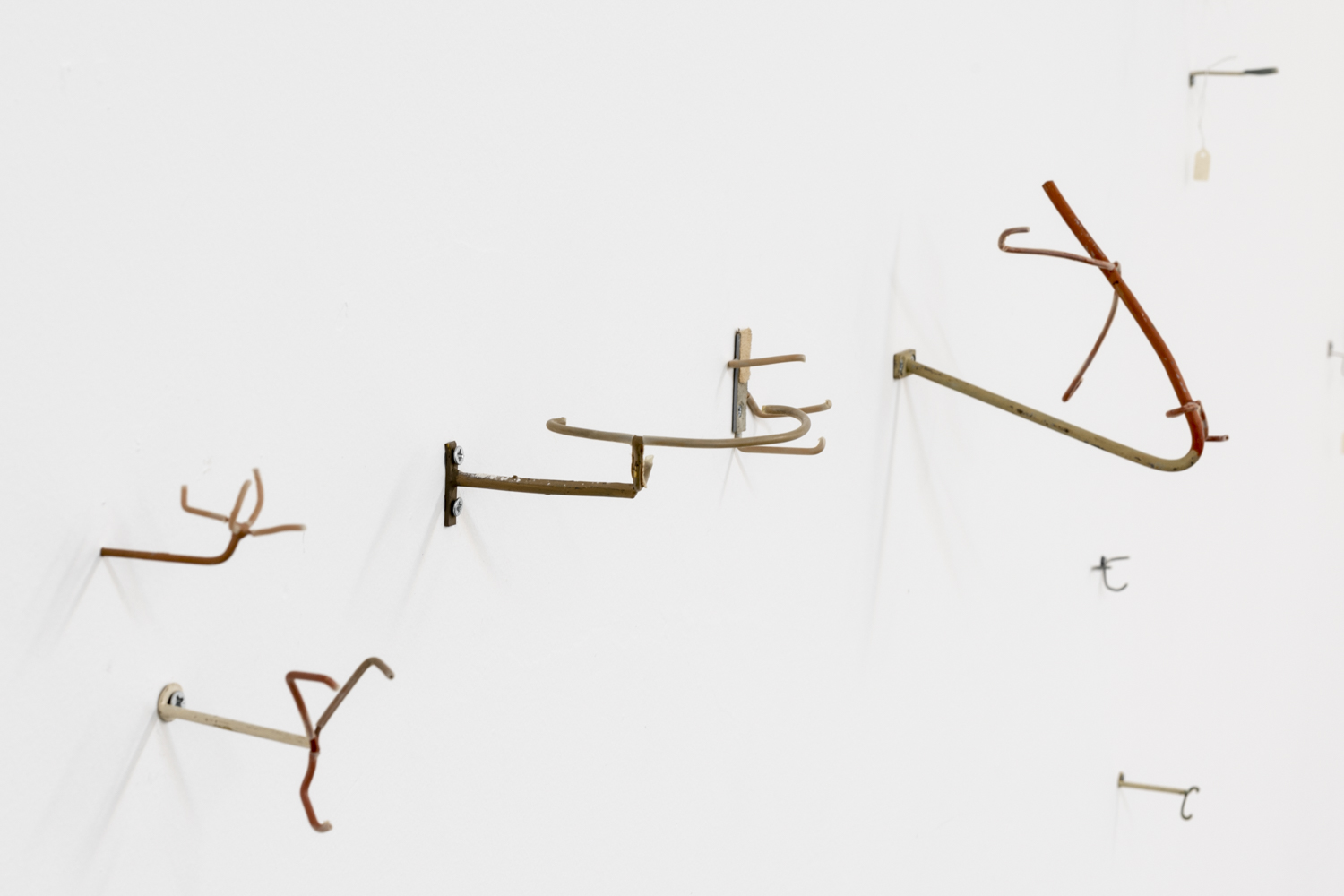
SaraNoa Mark, Guarding Invisibility, 2019-ongoing, Museum armatures, Variable sizes
In their work for the exhibition, SaraNoa Mark revisits the days they used to work as a minimum wage security guard at the Oriental Institute between 2016 and 2019. The artist became a security guard at an institute that collects artifacts from miles away from its origin location in order to get access to economic capital. During their employment there, Mark established a closeness to those artifacts that will contribute to their artistic practice, and also gathered some leftover fabrics and hangers from the museum to compensate for their underpayment. ''Guarding Invisibility'' is an installation created with the discarded museum displays materials: linen used to line the exhibition cases and museum armatures designed to hold ancient artifacts. The museum display materials are constructed to camouflage, disguising their presence. Mark combines surveillance footage collected during their time as a security guard with the museum's waste fabrics. Mark makes visible the invisible to reveal the unseen labor propelling museum institutions.

SaraNoa Mark, Guarding Invisibility, 2019-ongoing, Museum armatures, Variable sizes
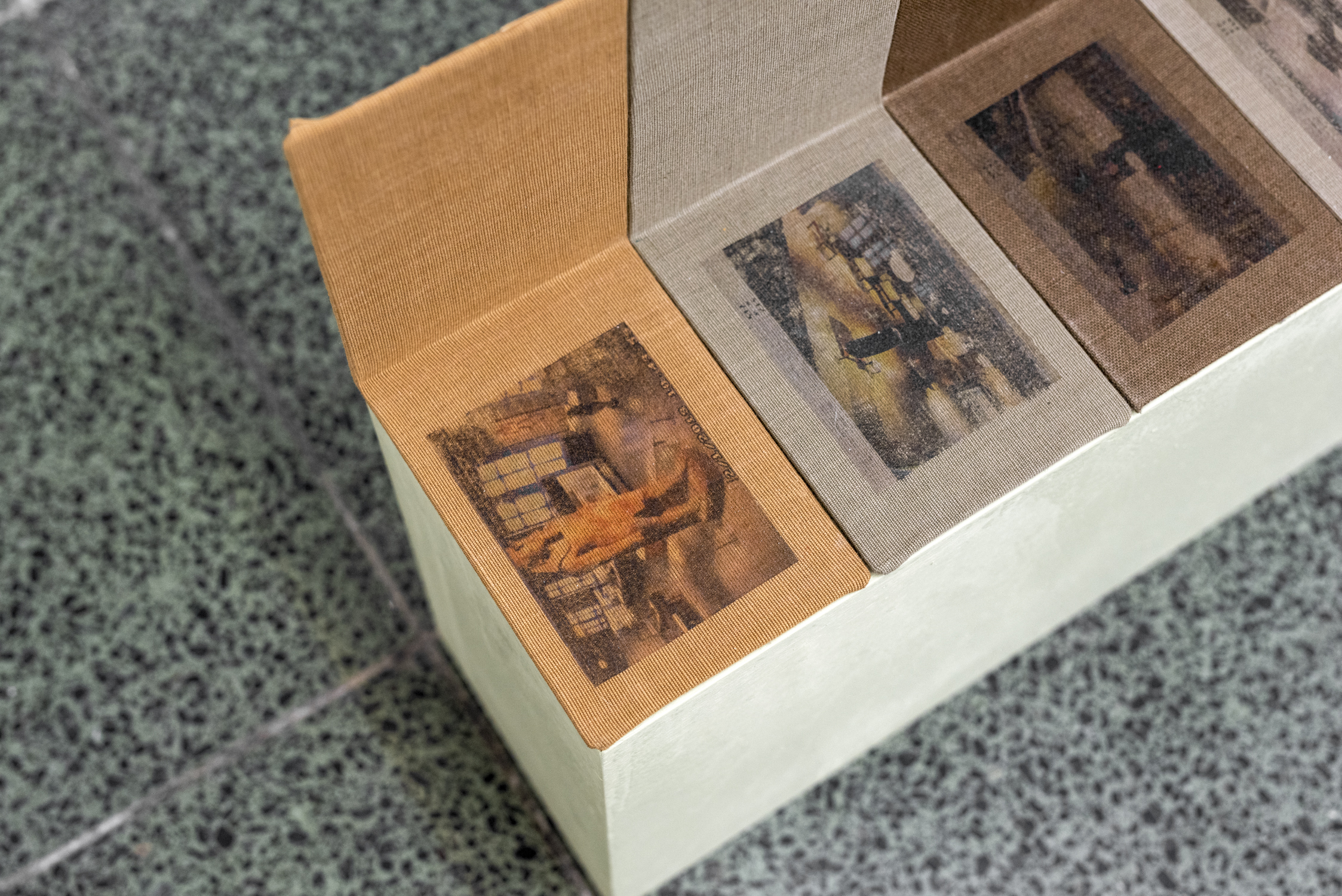
SaraNoa Mark, Sleeping with artifacts, 2023, Museum display linen repurposed from the oriental institute, security footage, metal, Variable sizes
Ryan Josey reconstructs an installation from his bedroom where a wooden crate he uses to store his unexhibited works doubles as a stand, holding the laptop he uses to perform online sex work. A box designed to protect the artworks while storing and transporting, hides the artistic labor and becomes a pedestal for another form of labor. His collages will be published on the OnlyFans/JustForFans page created for this project.
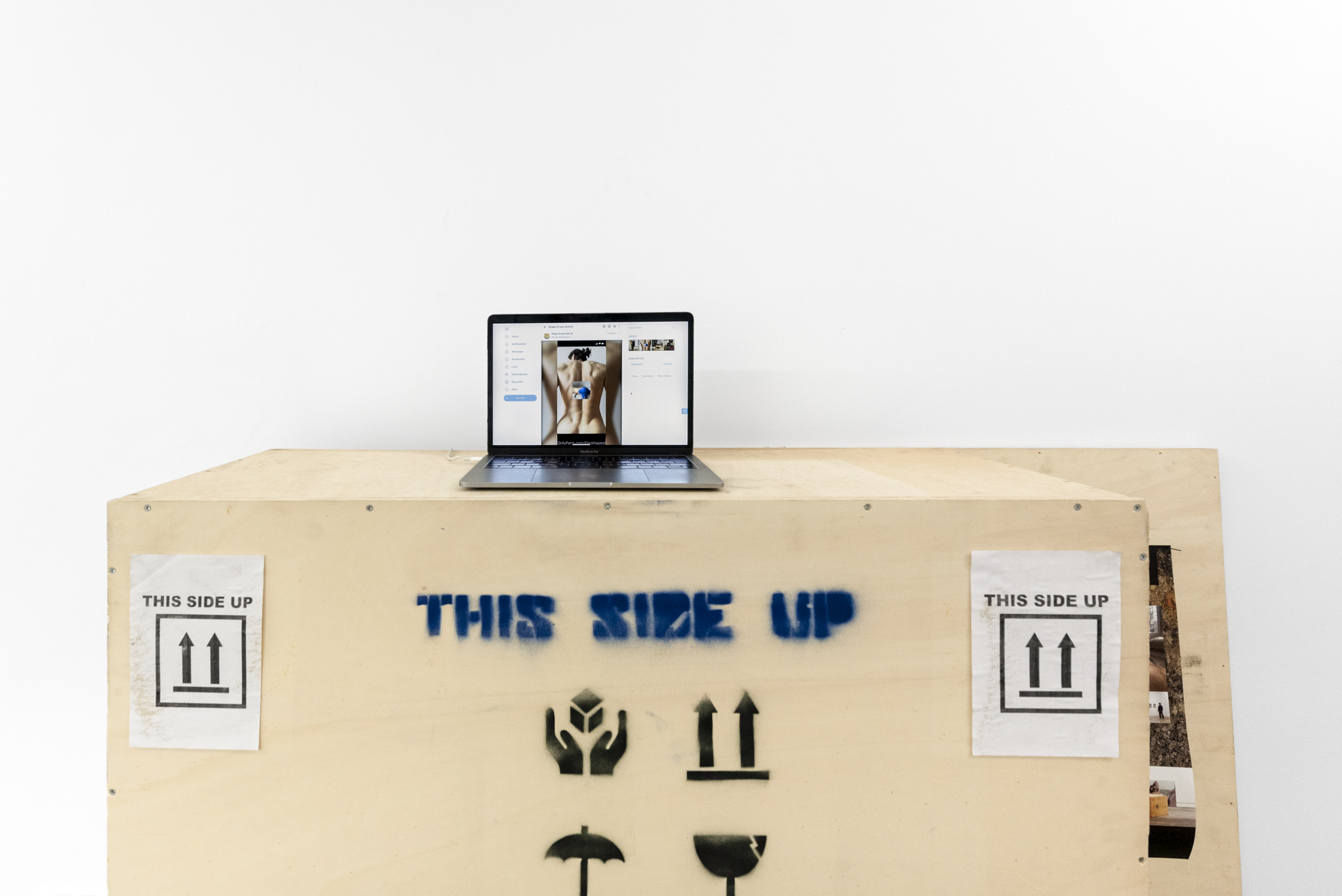

Ryan Josey, The heart/mind as a small, well-managed fire, 2022-ongoing, Crate, Macbook, 50 x 30 cm digital print
Aleksiy Taruts (he/him) focuses on the intersection of material and immaterial/creative production, and the point where the repetitive cycle of production becomes an artwork. A hat designed by Balenciaga, a brand that appropriates creative production of street culture and reintroduces it to socio-economically privileged groups, returns to the street with its imitation produced by unknown labor and finally becomes an art object through Taruts' intervention.

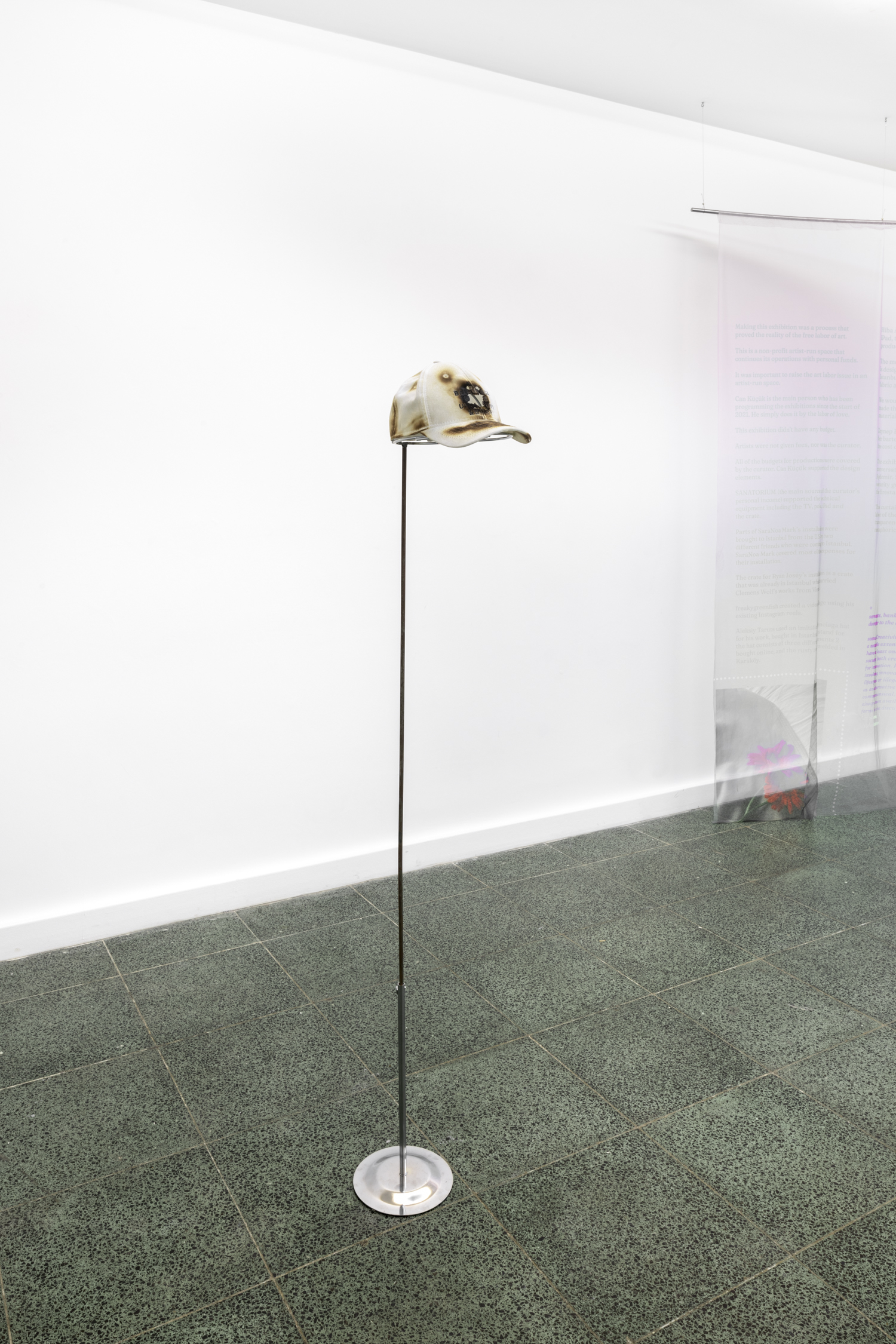
Aleksiy Taruts, 6AMBAS 6ERGAIM 6AIRAKTAR, 2022, “Fake balenciaga multi-language logo hat customized for pineal gland opening, dm to buy (@aleksiy_taruts), 295 € + shipping, money will be donated”
Hiba Ali (they/them) continues their research on surveillance practices at Amazon and the labor of women of color working there in a 360-degree virtual environment where they focus on predatory labor practices in Amazon's storage facilities. The artist virtually performs as an amazon worker and repeats slogans about the precarity of the workers. They use the creative possibilities of art in this hybrid space to imagine a world without Amazon, and a reality where all workers are liberated.
To reach Hiba Ali’s reading list on Amazon’s worker rights violations and surveillance practices: https://hibaali.info/projects/amazonification-reading-list

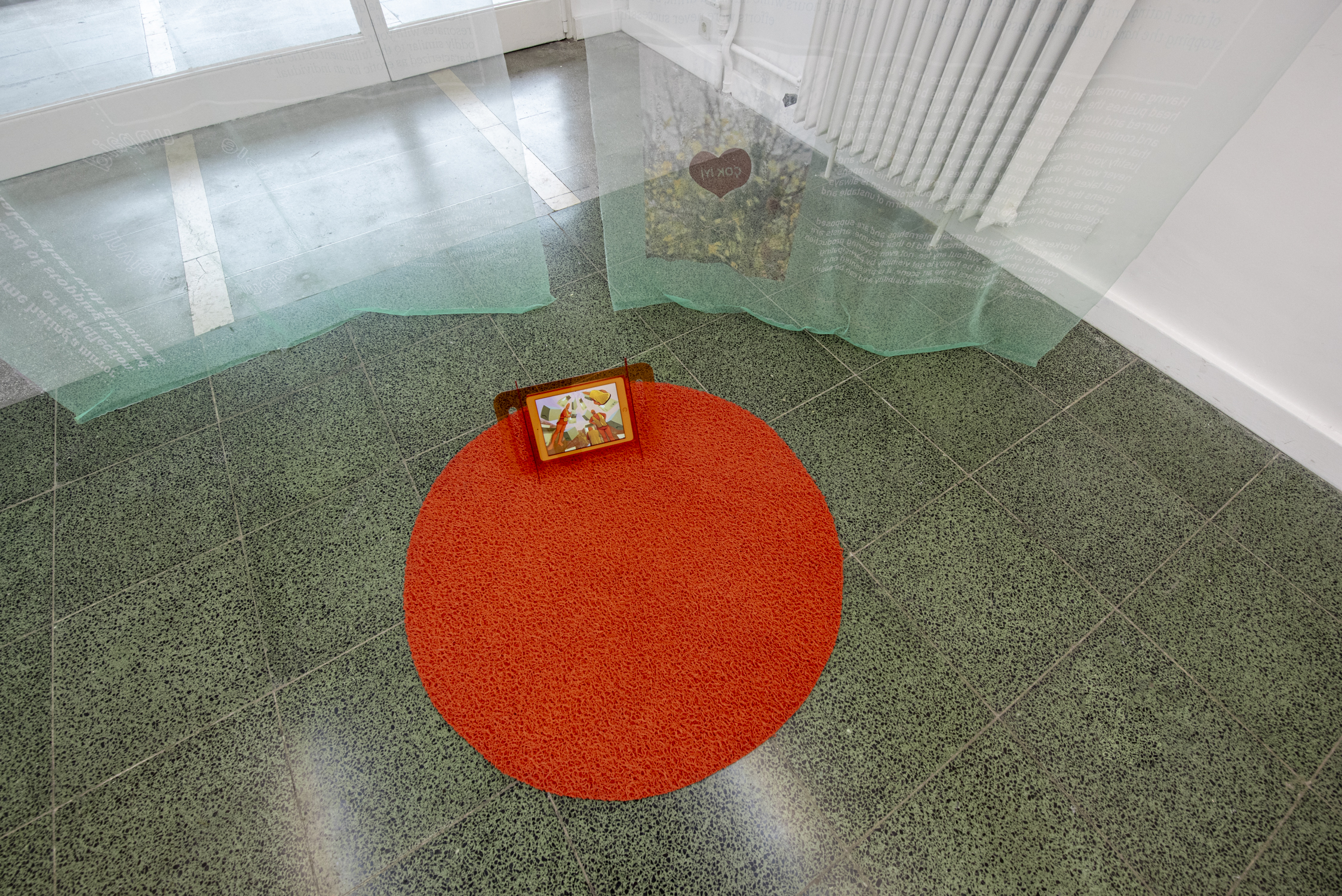
Hiba Ali, Workers liberation as environmental justice, 2020, 360 video, 02:59